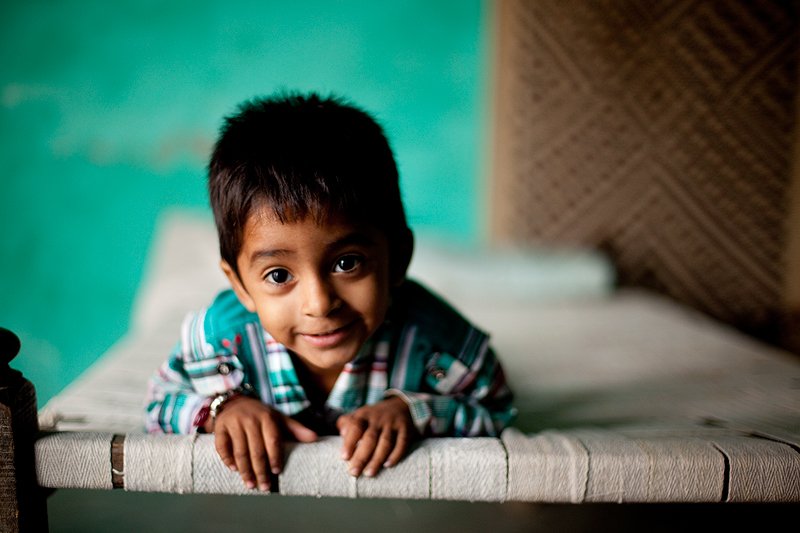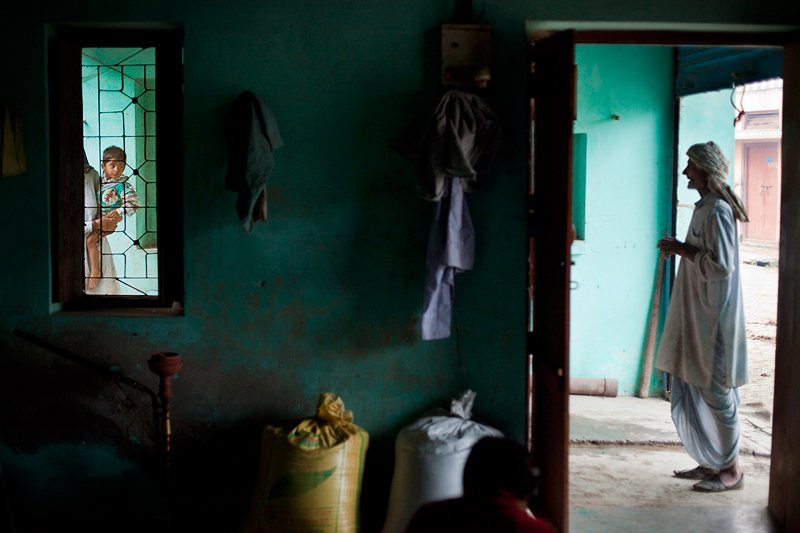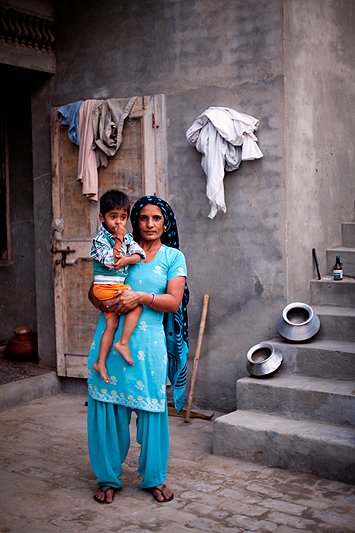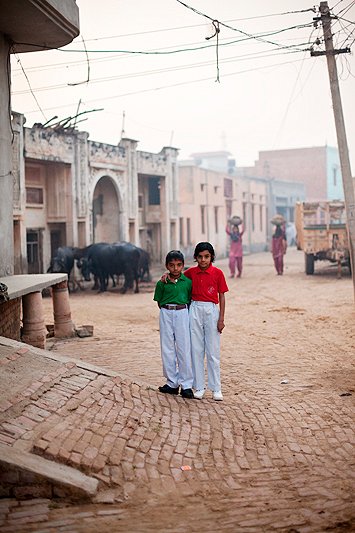Miracle Babies

In her words, Rajo Devi Lohan got ‘everything she ever wanted in her life’ when she conceived a baby girl at the National Fertlity Center (NFC), Hissar, through In Vitro Fertilisation Treatment. She bled for several days and was put in a ventilator. Baba Ram, her husband, had mortgaged his farm and sold his buffaloes to fund Rajo’s treatment. At 70, Rajo had become the world’s oldest mother.
Three years later, Rajo and her husband works in the fields to make ends meet. Naveen, her 3year old daughter devotedly follows Rajo everywhere. In the villages of Haryana, the social stigma of being barren is so much that the women prefer to risk their lives trying to conceive through IVF treatment than die without a child. At the NFC, where they treat 100 women per month, as much as 20% of the patients are above 50yrs, according to Dr.M.R.Biswas. There are no medical laws in India restricting IVF treatment in elderly women. The doctors of the fertility center in Hissar claim they are doing a service by giving these women a chance to procreate. It is common practice for men to re-marry if their wives are unable to conceive. Baba Ram had married Rajo’s younger sister when Rajo had proved to be barren. But all hope was lost, when the younger sister also couldn’t give him children. He says that until Naveen came into their lives, people used to consider it inauspicious to invite their family to weddings and other celeberations.
As India’s population continues to grow over 1.2 billion, women above the age of 50 continue to flock to NFC, Hissar to fulfill their dream of becoming a mother. When she was asked what would happen to Naveen once Rajo and Baba is gone from this world, Rajo says, “I have faith that God will look after her.”
Rajo Devi Lohan is the unlikely ambassador of National Fertility Center (NFC), Hissar, Haryana. Now perhaps India’s most famous mother, people still flock to her village in Alewa, Haryana, to listen to her miracle story first hand. Her delivery was not without complications. She barely survived. Yet she maintains that it was all worth the risk.
In this village of Alewa, Haryana, a few things are treasured more than a male child. Although it is only 100 miles away from Delhi, the village with its 200 odd families, is far removed from modern life. However, the Panchayats now tell the man to try IVF when he approaches them for permission to marry for a second or a third time because his wife is unable to bear him children.
A new born baby lies with her mother Bharbai (60), at the NFC, Hissar. The National Fertility Centre was established in 2000 in Hissar by Gyanwati Bishnoi, a gynecologist. In ten years, the numbers of couples coming in for IVF has gone up exponentially. From a mere four or five couples, now the centre has more than 100 couples flocking to it per month hoping they can give birth despite all odds. National Fertility Centre is probably the only IVF clinic in the country that has the reputation of being the only centre where women of any age can go and conceive successfully.
In Haryana, there are around six or seven IVF clinics. In the country, there are more than 150. The first IVF centres were established in Jaipur, Delhi and Mumbai in 1991. Then these centres mushroomed everywhere spanning rural, semi-urban and metropolitan cities. One has come up in Bhatinda in Punjab. But a lot of people desirous of having a child still flock to the National Fertility Centre because of the success stories. There are no regulations for IVF that exist in India currently. This is the baby boom of a different kind.
For Dr. Bishnoi of NFC, the criticisms that it is a health hazard for women at an advanced age to produce babies and that the doctor is acting immoral by helping them as it produces dysfunctional families where the child might be orphaned after a few years, are baseless. That the baby would be rendered motherless and fatherless too soon is not what is his call. He is only doing what is asked of him. Seen in this picture is 3 year old Naveen with her aunt. Rajo Devi Lohan looks upon her extended family to take care of Naveen in the future.
Chameli Devi, from Budain, Haryana, gave birth to twins at the age of 58. A boy and a girl. Three years later, she still recounts the painful survival and her miraculous achievement despite high blood pressure.
Santo Devi (70) is Kapoor Singh’s first wife. Her body was too frail to endure the IVF treatment. Chameli Devi, the second wife, however had a successful treatment at the age of 58 years. Santo Devi cooks, cleans and washes clothes for the family. She is happy for the family, she says.
Kapoor Singh is a happy man now. He doesn’t have to endure the taunts of his neighbors anymore. But even during all the years of childlessness, neither surrogacy nor adoption were an option. Now, they have an heir to the family. Kapoor Singh says there was only one thing lacking in his life. Now the twins have filled that void.
At 66, Bhateri Devi from Satrod in Haryana became the oldest woman to give birth to triplets. Two boys and a girl. She bled excessively, but managed to pull through. Her husband, Deva Singh bought her gold bangles. Bhateri had given him what his two younger wives couldn’t. Their youngest son, Bhupesh did not live long though. Bhateri Devi and Deva Singh now lives with their two children, Bhupinder and Isha.


Naveen was born in November 2008. Her father sold off his buffaloes, his cart, and mortgaged his land. It cost him around Rs. 500,000. They threw a grand party where guests from neighbouring villages came. Almost 2,500 guests ate at the celebration.
Naveen was the result of a collision of technology, light regulation and money. India's medical culture emphasises the mother's right to create life rather than the rights of a child. Unlike their counterparts in the West, Indian doctors do not need to take into account a mother's age, only her physique. There are no legal restrictions on the number of eggs that can be implanted. Although it is 30 years since IVF arrived in India, there is still not a single law governing fertility treatment.















